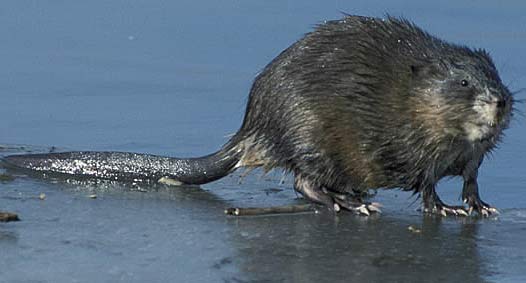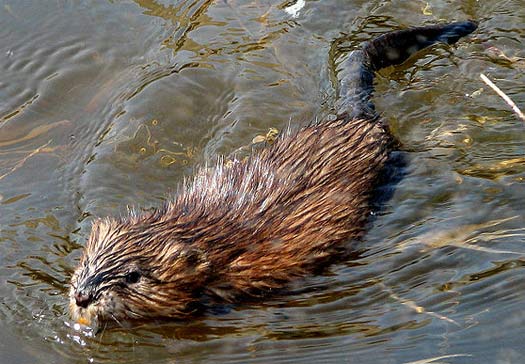Muskrat – Musky, Round Semi-aquatic Rodent

Although they are rather large, adaptable, omnivorous rodents like rats, and they have “rat” in their names they are not rats really. They belong to a rodent group with mostly lemmings and voles in it. They have a more rounded, soft appearance than the pointy-nosed rats do. They do have a musky smell from the scent they use to mark their territory. The male may use its musky secretion to attract females. Originally from North America the muskrat was introduced to Europe and Asia and has spread all across the northern hemisphere.

The muskrat inhabits marshes and freshwater banks. Its body can be 10 to 14 inches (25 – 36 cm) long with a tail of 8 to 11 inches (20 – 28 cm). It is an excellent swimmer and spends much of its life in the water. It has webbed hind feet and a long flat tail which it uses as a rudder. It feeds on aquatic and other vegetation and sometimes frogs, fish or shellfish. It usually digs a burrow home on the side of the river and adds plant debris and mud to make it nice. The burrow may be home to as many as 10 animals.

All kinds of animals seek out the muskrat as prey including the snapping turtle, mink, lynx, otters, snakes, alligator and various birds of prey. Where they have been introduced to the territory of the former Soviet Union the golden jackal has proven to be an excellent muskrat hunter. However, the busy beaver is no enemy of the muskrat and has been observed cooperating with the muskrat on the river banks where they are busily occupied eating and arranging things.
The muskrat is occasionally eaten by people in North America and Europe. Also, crafty people have been known to make use of the animal’s warm pelt for fur jackets.

